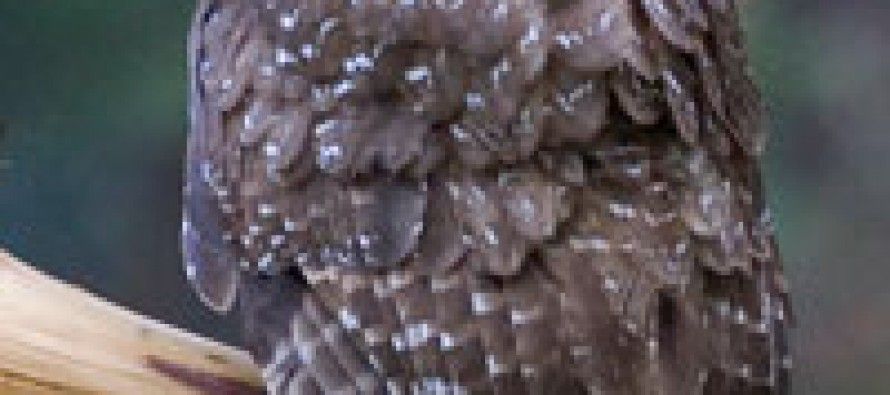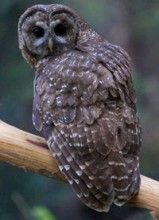Enviros fight over CA Spotted Owl

 The California Spotted Owl faces extinction unless logging is banned in forests in which “the small and declining owl population” may be found in California’s Sierra Nevadas and the mountains of Southern California.
The California Spotted Owl faces extinction unless logging is banned in forests in which “the small and declining owl population” may be found in California’s Sierra Nevadas and the mountains of Southern California.
So warns a petition submitted last week to the U.S. Fish and Wildlife Service demanding the agency add the bird to the list of federally protected “threatened” or “endangered” species.
The petition was jointly filed by little-known advocacy groups Wild Nature Institute, based in New Hampshire, and the John Muir Project of Earth Island Institute, which maintains a post office box in Big Bear City.
The groups not only oppose continued logging on the 10 million acres of government-owned timberland in the Golden State, but also the 9 million acres of privately-owned timberland.
Their anti-logging zeal even extends to timberland ravaged by forest fires, like the 150,000 acres in Stanislaus National Forest and 77,000 acres in Yosemite National Park that burned up in last year’s Rim Fire.
“Forest fire is not the threat people think it is,” said Wild Nature Institute co-founder Monica Bond, the self-described “biodiversity activist” who co-authored the petition seeking protected status for the California Spotted Owl.
Devastating
The timber industry represents a far greater threat to the California Spotted Owl, Bond insisted. Indeed, she lamented, “logging on public lands is rampant, and having a devastating effect on this species.”
Her view was seconded by Chad Hanson, director of the John Muir Project, who joined Bond in co-authoring the petition to the Fish and Wildlife Service. “Science is telling us loudly,” he said, “that this species is in danger of extinction.”
Others think the threat to the California Spotted Owl greatly exaggerated.
John Heil, a spokesman for the U.S. Forest Service, said the agency has determined the California Spotted Owl is not in danger of extinction. The agency also believes wildfires, rather than logging, pose the greater threat to the owl’s natural habitat.
That’s why the Forest Service supports “salvage” logging in the charred Stanislaus National Forest. By removing the remains of the burned trees, the agency aims to create healthier forests – and owl habitat – going forward.
Environmental Defense Fund
The decision by the Forest Service has the backing of the Environmental Defense Fund, which boasts more than 1 million members. It parts ways with the Wild Nature Institute and the John Muir Project as to the best approach to post-fire recovery on the 400 square miles of public land consumed by the Rim Fire.
“Many in the environmental community instinctively approach recovery after disasters like this with a strategy of ‘letting nature heal itself,’” noted Eric Holst, senior director of EDF’s Working Lands Program, in a February blog post.
That approach would result in shrubs sprouting from stumps, which would be deleterious to seedling survival of conifers, particularly pine trees.
The pines “are incredibly valuable for Sierra wildlife,” Holst blogged. And in the wake of the Rim Fire, he argued, nature actually “makes it much harder for tree populations in areas impacted by the (fire) to rebound.”
That’s why loggers salvaging dead burned trees in the Sierras are doing a service to the California Spotted Owl population.
Related Articles
Could 12,000 lawmakers fix what ails California?
The one thing m how to get your ex back ost Democrats and Republicans seem to agree on is that
SCOTUS decision rolls back EPA authority
On Monday, the Supreme Court struck down the Environmental Protection Agency’s restriction of power plants’ emissions of mercury and other
Obamacare: This is going to hurt
Ouch! That’s the cry of someone trying to sign up for the Affordable Care Act, usually called Obamacare. Health insurance




